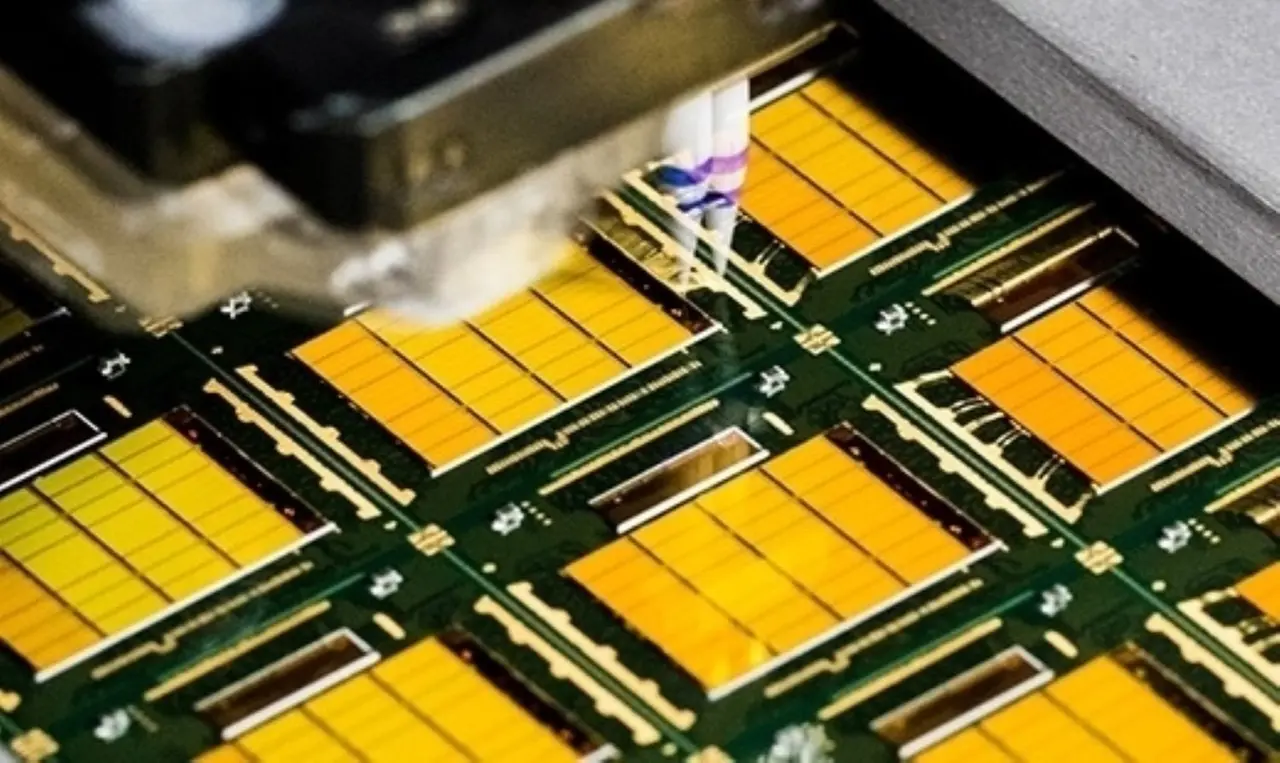AI and Real-Time Data: Revolutionizing Financial Trading
2 Sources
2 Sources
[1]
Game-Changing AI Innovations Transforming Financial Trading Today
Artificial intelligence (AI) has completely changed the financial trading landscape as it offers traders new tools and strategies that enhance decision-making, increase efficiency, and improve outcomes. AI is evolving almost daily and has a tremendous impact on financial trading. Let's explore the most transformative AI innovations and new products and explain how they are reshaping the way financial markets work and how to use these tools to your advantage, be it in trading or investing. As these technologies become more and more powerful and computer processors for neural networks become more efficient, many prominent players in financial trading have started to integrate AI into their platforms. iFOREX harnesses the power of AI and allows users to get answers to any questions, combining 25+ years of experience in one refined and free-to-use product. This is a serious possibility for beginners to get fast answers to all their questions regarding trading and strategies. All this was possible thanks to technological advancements in computing power and cost-effectiveness. Newer chips are more powerful than previous generations, and they also include NPUs or neural processing units, further accelerating the AI trend. As more and more companies try to embrace AI in their sectors and products, the computers and hips for neural networks are becoming cheaper and cheaper. As a result, big financial institutions like iForex started to integrate AI services into their existing platforms. One important contribution of AI to financial trading is the development of predictive analytics. Advanced AI algorithms analyze vast amounts of historical data to identify patterns and trends that can detect ongoing trends. These models are capable of processing data at a scale and speed far beyond human capabilities. As a result, traders can receive accurate insights and use this data to make more informed trading decisions. This trend is only going to continue and in the future, the majority of trading analytics will be done by advanced AI algorithms which will be much cheaper to operate or purchase. By employing AI-driven predictive analytics, financial traders can anticipate market changes and adapt their trading strategies accordingly. AI-powered trading systems are advanced versions of algorithmic trading robots, and they are transforming the way trades are executed. These systems use complex algorithms and can analyze markets and make accurate trading decisions on their own without human intervention. These AI systems do not require explicit programming and can adapt to new market scenarios quickly. The speed and efficiency of AI algo-trading systems allow for the execution of trades in milliseconds, taking advantage of the smallest price movements. Because of their complexity and requirement of dedicated powerful computers, AI trading systems are mostly used in high-frequency trading, where speed is crucial to capitalize on market opportunities. However, this trend will change very soon, as these algorithms are becoming increasingly cheaper to build and operate. Natural Language Processing (NLP) is an AI innovation that is making headlines in all industries, including financial trading. ChatGPT is powered by NLP algorithms, which have completely changed the AI landscape and adoption. NLP enables AI to analyze and interpret large volumes of unstructured data, such as news articles, social media posts, and financial reports. By processing and interpreting this information, NLP algorithms can understand market sentiment and predict how news events might impact market conditions. Despite these advanced capabilities, NLPs are still not fully matured, and NLP models tend to make errors, especially when dealing with mathematical data. When used wisely, traders can use this interpreted data to quickly react to the news that can influence asset prices and gain a competitive edge in trading. Risk management is critical for successful financial trading, and AI is becoming increasingly more powerful in this area. AI systems can instantly assess market risks by analyzing market volatility, historical data, and other relevant factors. Unlike technical indicators, AI models can interpret this information and present end-user quick conclusions. As a result, these systems provide traders with real-time insights into potential risks, affecting their risk management very positively. AI's ability to process and analyze huge sums of data at a granular level, makes it a powerful tool in the hands of traders, allowing them to minimize risks and protect their capital.
[2]
How real-time data streams are transforming the trading floor
Time has always mattered on the trading floor. A delay of a few seconds could cost millions. Now, with the emergence of generative AI (gen AI), it's the power of real-time that matters most. Together, real-time data streaming and artificial intelligence are poised to bring formidable changes to the trading arena, creating a powerful toolset for making more accurate predictions, optimizing trading strategies, and managing risk successfully. The earliest form of real-time financial information came from ticker tape machines that transmitted stock price information over telegraph lines, allowing traders to receive data in minutes. Today, it's milliseconds. Human and algorithmic traders can access and react to market movements in an instant, capitalizing on short-lived opportunities and mitigating risk by making quicker adjustments to trading strategies. Vast streams of data from news feeds, social media, and other sources power ultra-informed decision-making in far less time than it takes to shout "Sold!". New gen AI analytics capabilities are dramatically driving up the value derived from this real-time data, providing increasingly accurate market predictions and insights for traders, while refining trading algorithms to better adapt to live situations. Financial organizations are responding in kind, ramping up investment in R&D and talent acquisition, and upgrading infrastructure to stay competitive. On the trading floor, we're witnessing a shift in the use of AI from lower-risk compliance and marketing tasks to higher-risk responsibilities, such as guiding investment decisions and identifying opportunities. The Financial Times reports that JP Morgan has plans to expand the use of its gen AI tool "Moneyball" which flags questionable decisions by portfolio managers to help them correct bias and improve processes. Voya Investment Management is also reporting reliable results from its virtual analyst that monitors stock for potential risks. But with every progressive iteration of gen AI, it's becoming more imperative that leaders invest wisely in the right data integration and management approach. Your AI analysis is only as good as the data you feed it. As the saying in the data industry goes: "garbage in, garbage out". Incorrect, incomplete, outdated, or latent data leads to inaccurate outputs affecting trading strategies and investment decisions. And when we think of a risk management system that cannot process insights about risk in real-time? Well, we can all predict the future of what happens there. This is where Data Streaming Platforms (DSPs) come in. DSPs are essential for the effective functioning and utilization of gen AI models. After all, they are what powers the continuous, real-time ingestion, processing, and analysis of data. Designed to scale, DSPs can continuously handle large volumes of real-time data, meaning AI models are always trained on the latest information. This allows applications to adapt dynamically and reveal new trends or identify any anomalies on behalf of traders. DSPs also benefit from seamless connectivity, integrating with existing infrastructure to enable diverse data to stream smoothly between different systems - enriching the dataset as a whole. In fact, our 2024 Data Streaming Report revealed that the majority of IT leaders in the financial services industry view DSPs as a key enabler for AI adoption - allowing them to tap into continuously enriched, trustworthy, and contextualized data for quickly building AI applications. Almost two-thirds (63%) of those surveyed said data streaming platforms extensively or significantly ease AI/ML adoption. What's more, for many leaders, DSPs support the democratization of data across organizations, broadening access to different data sources and breaking down data silos. The result? Over a third (35%) are realizing double the ROI on their data streaming investments to date, while more than half (53%) are seeing between 5x and 10x ROI - clear proof that real-time data streaming is a serious competitive differentiator. Real-time data streaming allows businesses to continually adapt, adjust, and counter challenges. In our survey, over half of IT leaders across different industries (51%) said it enabled their organizations to be truly nimble. As more financial organizations leverage the analytical superpowers of AI, it's becoming clear that data streaming is a critical enabler for AI applications to ensure successful trading. Real-time data keeps gen AI models updated and relevant, while gen AI enhances the value derived from real-time data through advanced analytics and scenario generation. As one colleague here at Confluent put it: Data streaming is the central nervous system for data, while AI is the brain. Industry optimists will see an opportunity for real-time-fueled gen AI to foster more efficient and stable financial markets down the line, bolstered by the democratization of access to trading and investment strategies that will provide more people with the financial literacy and tools to grow their wealth.
Share
Share
Copy Link
AI innovations and real-time data streams are transforming the landscape of financial trading. From predictive analytics to high-frequency trading, these technologies are reshaping how traders operate and make decisions.

The Rise of AI in Financial Trading
The financial trading sector is undergoing a significant transformation, driven by cutting-edge artificial intelligence (AI) innovations. These advancements are revolutionizing how traders analyze markets, make decisions, and execute trades. AI-powered algorithms are now capable of processing vast amounts of data at unprecedented speeds, providing traders with valuable insights and predictive analytics
1
.Predictive Analytics and Machine Learning
One of the most impactful applications of AI in trading is predictive analytics. Machine learning models can analyze historical data, identify patterns, and forecast market trends with increasing accuracy. These models continuously learn and adapt, improving their predictions over time. This capability allows traders to make more informed decisions and potentially gain a competitive edge in the market
1
.High-Frequency Trading and AI
AI has also revolutionized high-frequency trading (HFT), enabling algorithms to execute trades at speeds impossible for human traders. These AI-driven systems can analyze market conditions, identify opportunities, and execute trades in microseconds. The integration of AI in HFT has led to increased market liquidity and efficiency, albeit with ongoing debates about its impact on market stability
1
.Real-Time Data Streams: The Fuel for AI-Driven Trading
The power of AI in trading is significantly amplified by the availability of real-time data streams. These streams provide a constant flow of up-to-the-second information, allowing AI algorithms to make split-second decisions based on the most current market conditions
2
.Transforming the Trading Floor
Real-time data streams are transforming traditional trading floors into high-tech hubs. Traders now have access to dashboards displaying real-time market data, news feeds, and AI-generated insights. This wealth of information enables quicker decision-making and more effective risk management
2
.Related Stories
Challenges and Considerations
While AI and real-time data offer numerous benefits, they also present challenges. Ensuring data quality, managing the sheer volume of information, and addressing potential biases in AI algorithms are ongoing concerns. Additionally, regulatory bodies are closely monitoring these technological advancements to ensure fair and stable markets
1
2
.The Future of AI in Trading
As AI technology continues to evolve, its impact on financial trading is expected to grow. Future developments may include more sophisticated natural language processing for news analysis, advanced sentiment analysis of social media, and even AI systems capable of developing their own trading strategies. The integration of AI and real-time data streams is not just changing how trades are executed, but is fundamentally reshaping the entire financial trading landscape.
References
Summarized by
Navi
[1]
Related Stories
AI Revolutionizes Financial Services: Enhanced Security, Personalization, and Operational Efficiency
19 Feb 2025•Business and Economy

AI in Financial Markets: Efficiency Boost with Potential for Increased Volatility
18 Oct 2024•Business and Economy

AI's Transformative Impact on Banking and Financial Oversight
19 Aug 2024

Recent Highlights
1
OpenAI releases GPT-5.2 AI model after code red memo targets Google's Gemini 3 threat
Technology

2
Disney invests $1 billion in OpenAI, licenses 200+ characters for Sora AI video generator
Technology

3
OpenAI faces wrongful death lawsuit after ChatGPT allegedly fueled murder-suicide tragedy
Policy and Regulation





